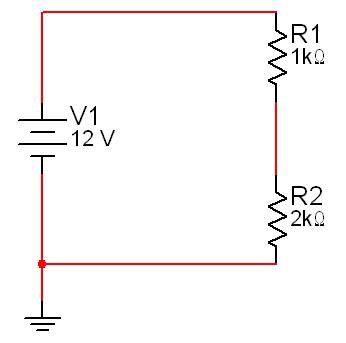SPICE Simulation Overview
Contents
- Overview
- SPICE Simulation Program with Integrated Circuit Emphasis (SPICE)
- SPICE Simulation Models and Netlists
- A Tradeoff Between Speed and Accuracy
- Using SPICE Simulation
- Learning More
Overview
The National Instruments SPICE Simulation Fundamentals series is your free resource on the internet for learning about circuit simulation. The series is a set of tutorials and information on SPICE simulation, OrCAD pSPICE compatibility, SPICE modeling, and other concepts in circuit simulation.
For more information, see the SPICE Simulation Fundamentals main page.
The series is divided among a number of in-depth detailed articles that will give you HOW TO information on the important concepts and details of SPICE simulation.
Circuit simulation is an important part of any design process. By simulating your circuits, you can detect errors early in the process, and avoid costly and time consuming prototype reworking. You can also easily swap components to evaluate designs with varying bills of materials (BOMs).
SPICE Simulation Program with Integrated Circuit Emphasis (SPICE)
SPICE is a computer simulation and modeling program used by engineers to mathematically predict the behavior of electronics circuits. Developed at the University of California at Berkeley, SPICE can be used to simulate circuits of almost all complexities. However, SPICE is generally used to predict the behavior of low to mid frequency (DC to around 100MHz) circuits.
SPICE Simulation Models and Netlists
SPICE has the ability to simulate components ranging from the most basic passive elements such as resistors and capacitors to sophisticated semiconductor devices such as MESFETs and MOSFETs. Using these intrinsic components as the basic building blocks for larger models, designers and chip manufacturers have been able to define a truly vast and diverse number of SPICE models. Most commercially available simulators include more than 15,000 different components.
The quality of SPICE models can vary, and not all SPICE models are applicable to every application. It is important to consider this when using the models supplied with a SPICE simulation package. Using a SPICE model inappropriately can lead to inaccurate results, or even generate an error in some circumstances. One of the most common errors made by even seasoned engineers is confusing a SPICE model with a PSPICE model. PSPICE is a commercially available program that uses proprietary languages to define components and models.
A circuit must be presented to SPICE in the form of a netlist. The netlist is a text description of all circuit elements such as transistors and capacitors, and their corresponding connections. Modern schematic capture and simulation tools such as Multisim allow users to draw circuit schematics in a user-friendly environment, and automatically translate the circuit diagrams into netlists. Consider as an example the simple voltage divider circuit below. We include both netlist and corresponding circuit schematic.
Voltage Divider Netlist
* Any text after the asterisk '*' is ignored by SPICE
* Voltage Divider
vV1 1 0 12
rR1 1 2 1000
rR2 2 0 2000
.OP * perform a DC operating point analysis
.END
Voltage Divider Schematic
A Tradeoff Between Speed and Accuracy
Although the SPICE models used in a SPICE simulation can greatly affect the accuracy of the results, simulation settings also contribute to varying degrees of accuracy. SPICE simulation options generally allow the user to gain more accuracy in the results at the cost of the speed of the simulation.
To understand the tradeoff between speed and accuracy in SPICE simulation one must consider a number of factors. SPICE simulation was created over 30 years go and around that time a typical computer had less power than the average microwave oven did thirty years later. Computing power was very expensive. The simulation of a circuit to the highest degree of accuracy could have taken longer and cost more money than building the actual circuit to see the results. Also, consider that the broad purpose of circuit simulation is to augment basic hand calculations and predict general circuit behavior. With these considerations in mind, the designers of SPICE created a program that could produce reasonably accurate results in a cost-effective manner. They also included many options to allow engineers to customize the accuracy of a simulation.
As computing power has increased exponentially over the years, so have the complexity of circuit designs being simulated. Speed and accuracy are still important factors to consider when simulating circuits.
Using SPICE Simulation
SPICE Simulation by itself can be used as a command line or text-based simulation tool. However, to effectively manage large and complex designs that span from simulation through to PCB layout and routing, several commercial software tools have been built around SPICE and XSPICE including Multisim. Included in Multisim is a graphical user interface to allow quick and efficient schematic capture, and interactive simulation.'
Learning More
To learn more about SPICE simulation, please see the SPICE Simulation Fundamentals home page.
